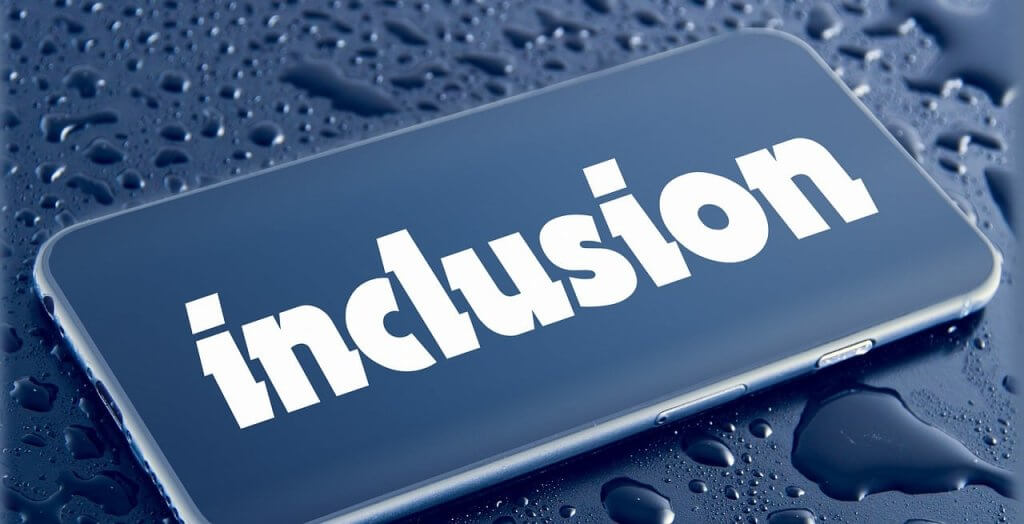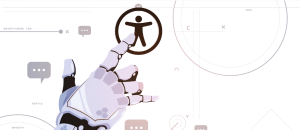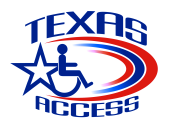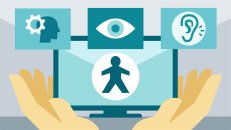Before you delve in, this article is the second part of my initial article on Business2Community – What is Usability? How Does it Relate to Web Accessibility?
Now let’s cover how digital inclusion covers the accessibility of Information and Communications Technology (ICT).
Digital inclusion is all about diversity and social inclusion in providing ICT access regardless of disability, age, location, language, education and literacy, culture, and economic situation.

To provide a digital experience that accommodates all types of users, whether abled or disabled, literate or illiterate, young or old, good or poor quality of internet connectivity, regardless of language or location, it is essential digital technologies are accessible, usable, and inclusive.
In the video below, a person with a disability has this to say about how different types of accessibility features improve lives for themselves and other users with disabilities :
Video Source: YouTube
So what do we know about digital inclusion and digital accessibility? Accessibility ⊂ Inclusion but Inclusion ⊄ Accessibility. This means accessibility is a subset of inclusion but not vice versa. As usual, I promise not to get tired of explaining what web/digital accessibility is all about.
Although inclusion and accessibility are not specifically close like “usability and accessibility,” they are related to creating a universal digital interface (website, applications, tools, information, and communication technologies) that accommodates everyone. Hence, the two phenomena have a strong association. The slight characteristic will be that one is more sensitive on a spectrum while the other covers a broader, much broader category. However, it is reasonable and most effective to address both in providing opportunities in this digital age.
Let’s try to spot the perception of each one, one at a time.
What is Digital Inclusion?
As Information and Communications Technology (ICT) becomes increasingly embedded in daily lives and activities, the need to provide universal access becomes more critical than ever. Digital inclusion is:
- all about diversity and social inclusion in providing access to ICT.
- addresses issues of opportunity, access, knowledge, and skill at the level of policy.
- when web and digital technologies are designed and developed to accommodate an entire community to the greatest extent possible.
Digital inclusion combines access to high-speed internet, information technologies, and digital literacy to create digitally inclusive societies. Hence, it covers three broad facets:
- Access (availability and public access),
- Adoption (digital literacy), and
- Application (economic development, education, and health care).
Digital inclusion means designing and developing for all while addressing a broad spectrum, including providing access regardless of disabilities and providing access regardless of geographic location, language, or culture. It means providing access irrespective of education, computer literacy, and skills, access for good bandwidth or low bandwidth, and providing access to all regardless of age.
What is Web/Digital Accessibility?
Digital accessibility is when websites, web and mobile applications, and web tools are designed and developed such that individuals with different forms of disabilities can use them. When there are no barriers that exclude people from using websites, tools, and technologies, we can say it is accessible. Because accessibility is all about enabling access to users with disabilities, digital accessibility caters to all disabilities that affect access to digital technologies or interfaces such as auditory, visual, cognitive, physical, and neurological disabilities. These categories must perceive, understand, navigate, and interact with the website, tools, and technologies.
Other than people with disabilities, digital accessibility bites social inclusion by benefitting older people as their abilities change due to aging through good color contrast, and people with reduced dexterity by providing accommodations to zoom. Web accessibility favors people with a slow internet connection (low bandwidth) through the use of CSS layout, good alternatives for non-text content, and clear navigation. It also helps individuals with temporary disabilities such as those with a broken arm who can only access with one hand, and benefits users with difficulty reading or those who want to multitask through text-to-speech accessibility accommodation.
Digital accessibility is achieved through guidelines, standards, and techniques- the international standard called the Web Content Accessibility Guidelines (WCAG). The most updated version is WCAG 2.1 Level AA.
Need more info? Read up on 👉Web Accessibility Best Practices
Digital Accessibility and Digital Inclusion
Although digital accessibility primarily covers designing and developing to accommodate people with different disabilities, i.e., breaking the concept of the “digital divide,” its requirements also benefit all types of users by presenting the ICT through various sensory channels, such as sound and sight. Digital accessibility requirement ensures disabled users can access information but diffuses to situations that are covered by digital inclusion. A web page designed with the accessibility guidelines will cater to disability, will be usable by people of all ages, will cater to language barriers, and will give a cue (signal for someone to do something) on how to complete actions regardless of the user’s literacy or education, will accommodate low bandwidth users but won’t address the underlying economic situation of the web user and it is not responsible for the user’s internet connectivity in the first place.
Digital inclusion covers more than access to the internet and ICT available to a category of individuals. It is a practical, policy-driven approach that addresses the needs of people and communities as a whole. It covers the concepts of the “digital divide” and “digital literacy”; hence, the comprehensive meaning of designing for all. Digital inclusion covers all that is required to create a digitally inclusive community of which accessibility is part of.
Conclusion
Web/digital accessibility primarily focuses on disability and offers much less attention to addressing broader issues, but it addresses them regardless. Hence, its relation is part of digital inclusion. Inclusion, however, covers accessibility, and much more.
To achieve digital inclusion, we must pursue:
- accessibility of digital content (website, applications, tools, information, and communication technologies) by all individuals,
- adoption of digital technologies (hardware, software, functional internet connectivity) by assisting individuals in understanding and operating these technologies, and its
- application by providing programs and services around vital community needs areas such as social communications, health care, and education.
Accessibility requirements help to achieve accessible content and more. Still, the framework is not enough to foster digital inclusion – which is the readiness of societies to be successful in providing access and opportunities to all individuals.
Since we now understand how digital inclusion covers accessibility, a key focus should be providing access to the most potent social inclusion tool- the Internet. Governments around the world’s policy-driven efforts to enable a barrier-free digital space and non-discriminative society with various international accessibility standards should cover government and private organizations and have enforcement procedures. By designing and developing websites, applications, tools, information, and communication technologies for accessibility, we are merely contributing to digital inclusion.







